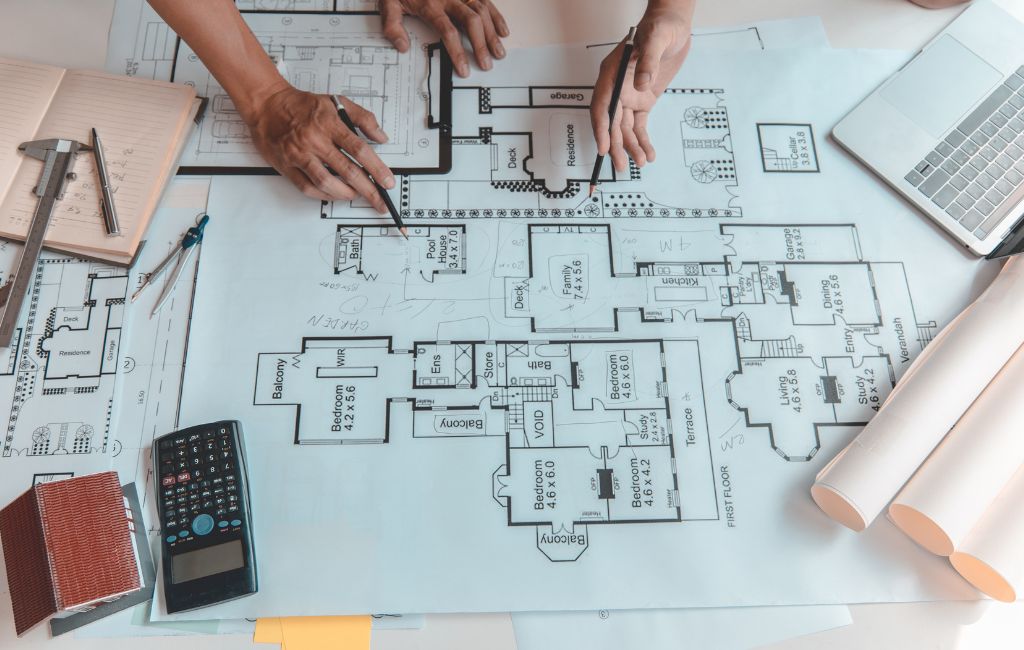Architect Insights: Modern Design Essentials
Modern architecture has evolved significantly over the past few decades, embracing new technologies, materials, and philosophies. This article explores the key elements that define modern design, offering insights from leading architects and real-world examples.
Embracing Minimalism
Minimalism remains a cornerstone of modern design. This approach focuses on simplicity, clean lines, and the use of space. By reducing clutter and emphasizing functionality, minimalism creates environments that are both aesthetically pleasing and practical.
Examples of minimalist architecture include the works of Ludwig Mies van der Rohe, whose famous quote “less is more” encapsulates the essence of this design philosophy. His Barcelona Pavilion is a prime example, showcasing open spaces and a limited color palette.
Integration with Nature
Modern design often seeks harmony with the natural environment. This can be achieved through large windows, open floor plans, and the use of natural materials such as wood and stone. The goal is to blur the lines between indoor and outdoor spaces, creating a seamless connection with nature.
Frank Lloyd Wright’s Fallingwater is a quintessential example, where the house is built over a waterfall, integrating the natural surroundings into the living space.
Technological Innovations
Advancements in technology have had a profound impact on modern architecture. Smart home systems, energy-efficient materials, and innovative construction techniques are now integral to contemporary design.
For instance, the Edge in Amsterdam is often cited as one of the smartest buildings in the world. It uses a combination of IoT devices, sustainable materials, and advanced energy management systems to create a highly efficient and user-friendly environment.
Sustainability and Eco-Friendly Design
Sustainability is a key focus in modern architecture. Architects are increasingly prioritizing eco-friendly materials and energy-efficient designs to reduce the environmental impact of buildings.
One notable example is the Bullitt Center in Seattle, which is often referred to as the greenest commercial building in the world. It features solar panels, rainwater harvesting systems, and composting toilets, among other sustainable technologies.
Adaptive Reuse
Adaptive reuse involves repurposing old buildings for new uses, preserving historical elements while incorporating modern design features. This approach not only conserves resources but also maintains cultural heritage.
The Tate Modern in London is a prime example, where a former power station was transformed into a contemporary art museum. The design retains the industrial character of the original structure while adding modern amenities and spaces.
Open and Flexible Spaces
Modern design often emphasizes open and flexible spaces that can adapt to various functions. This is particularly relevant in urban environments where space is at a premium.
The concept of open-plan living, popularized by architects like Le Corbusier, allows for multifunctional spaces that can be easily reconfigured. This approach is evident in many contemporary homes and office spaces.
Use of Light
Light plays a crucial role in modern architecture. Natural light is maximized through large windows, skylights, and open spaces, creating bright and inviting interiors.
Architects like Tadao Ando have mastered the use of light in their designs. His Church of the Light in Japan is a striking example, where a cross-shaped opening allows natural light to flood the interior, creating a serene and contemplative atmosphere.
Case Studies
To illustrate these principles, let’s look at a few case studies:
- Villa Savoye by Le Corbusier: This iconic modernist villa in France exemplifies open-plan living, minimalism, and the use of pilotis (support columns) to elevate the structure.
- 30 St Mary Axe (The Gherkin) by Norman Foster: Located in London, this skyscraper is known for its energy-efficient design and innovative use of materials.
- High Line Park in New York City: An example of adaptive reuse, this elevated park was created from a disused railway line, transforming it into a vibrant public space.
Statistics and Trends
Recent statistics highlight the growing importance of sustainable and smart design in modern architecture:
- According to the World Green Building Council, green buildings can reduce energy consumption by up to 30%.
- A report by MarketsandMarkets projects that the smart building market will grow from $60.7 billion in 2020 to $105.8 billion by 2025.
- The American Institute of Architects (AIA) reports that 70% of architects are incorporating sustainable design principles into their projects.
Conclusion
Modern architecture is characterized by its emphasis on minimalism, integration with nature, technological innovation, sustainability, adaptive reuse, open spaces, and the strategic use of light. These elements not only enhance the aesthetic appeal of buildings but also improve functionality and environmental performance. By understanding and applying these principles, architects can create spaces that are both beautiful and sustainable.
